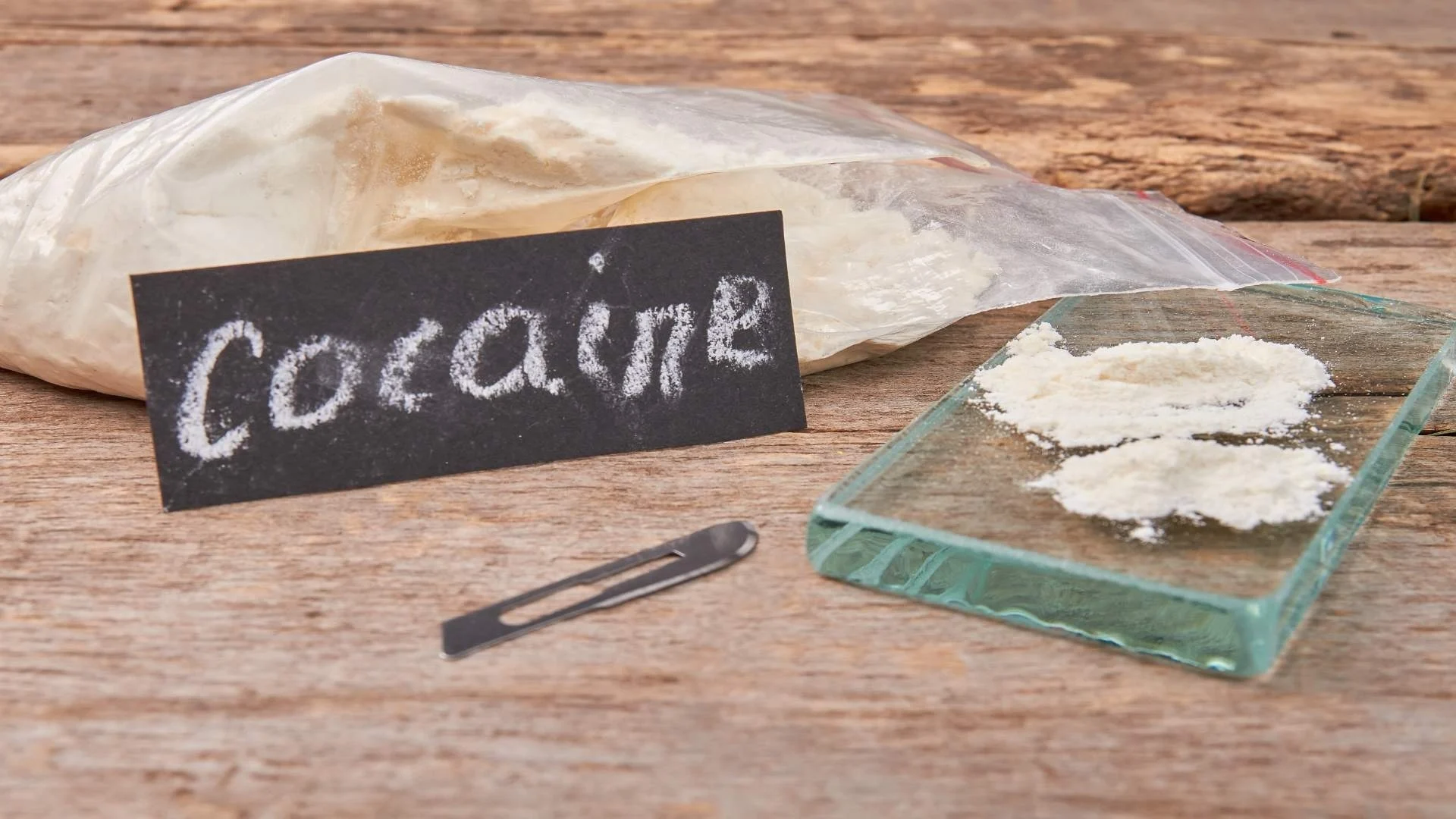Drug and Alcohol
What Is Cocaine Made Of? Uncovering Its Composition and Path to Recovery

Discover the origins, chemical makeup, and dangers of cocaine—from coca leaves to toxic additives—and explore how professional treatment can support recovery.
What is cocaine made of?
Cocaine is derived from the leaves of the coca plant, predominantly cultivated in South American countries like Colombia, Peru, and Bolivia. The active compound, benzoylmethylecgonine, is extracted and processed into cocaine hydrochloride, the form commonly misused today.
How is cocaine processed from coca leaves?
After harvesting, coca leaves are soaked in solvents, such as gasoline, to extract coca paste. This paste undergoes further chemical treatments, including the addition of acids and alkalis, to purify it into cocaine hydrochloride, a white, crystalline powder.
What substances are commonly used to adulterate cocaine?
Cocaine is often cut with various substances to increase volume and profitability. Common adulterants include local anesthetics like lidocaine, stimulants such as caffeine, and other agents like levamisole and baking soda, which can enhance or mimic cocaine's effects.
What are the short-term effects of cocaine use?
Short-term use of cocaine can lead to increased energy, heightened alertness, and feelings of euphoria. Physiological effects may include elevated heart rate, increased blood pressure, dilated pupils, and decreased appetite.
What are the long-term health risks associated with cocaine use?
Prolonged cocaine use can result in severe health issues, including cardiovascular problems like heart disease, neurological impairments, respiratory complications, and mental health disorders such as anxiety and depression. Chronic use also increases the risk of addiction.
Cocaine is a powerful and illicit stimulant that can have devastating effects on your life and health. But what is cocaine made of? Understanding its composition reveals the dangers it poses.
Derived from the coca plant, cocaine undergoes chemical transformations that enhance its potency and addictive potential. At The Edge Treatment Center, we understand the complexities of addiction and provide personalized treatment plans to support recovery and healing.
What Is Cocaine Made Of? The Basics
Cocaine's potency stems from both natural and synthetic elements. It originates from the coca plant, native to South America, where indigenous populations traditionally chewed its leaves for mild stimulation. The primary alkaloid—benzoylmethylecgonine—is extracted and chemically refined into cocaine hydrochloride, the powdered form widely abused today.
Natural Sources
Derived from coca leaves grown in Peru, Bolivia, and Colombia
Leaves contain alkaloids, primarily benzoylmethylecgonine
Chemical Processing
Leaves are soaked in solvents like gasoline
Chemicals such as sulfuric acid, kerosene, and lime are added
Final product: cocaine hydrochloride, often adulterated with additives to boost volume and profits
Chemical Composition of Cocaine
Below is the chemical composition of cocaine:
Benzoylmethylecgonine: core stimulant affecting the central nervous system
Hydrochloride: used to convert it into its snortable, powdered form
Common Adulterants
Lidocaine: mimics numbing effects
Caffeine: intensifies stimulation
Levamisole: a toxic deworming agent
Baking soda and talcum powder: used to increase bulk
Impact on the Body
Increases dopamine levels, creating a temporary "high"
Raises heart rate and blood pressure
Long-term use leads to cardiovascular issues and neurological damage
How Is Cocaine Produced?
Grown in tropical regions with high altitudes
Harvested multiple times a year for maximum yield
Extraction and Refinement
Leaves soaked in kerosene and sulfuric acid to extract coca paste
Crude paste forms the base for further refinement
Purification Process
Paste treated with ammonia and acetone
Substance filtered and crystallized into cocaine hydrochloride
Short-Term Effects of Cocaine
Accelerated heart rate
Elevated blood pressure
Dilated pupils
Heightened energy and alertness
Long-Term Health Consequences
Heart disease and increased risk of heart attack
Respiratory damage, especially in those who smoke it
Neurological decline impacting cognition and motor function
Psychological and Emotional Effects
Mood swings and irritability
Heightened anxiety and depression
Risk of developing psychiatric disorders

We’re Here To Help You Find Your Way
Would you like more information about mental health or drug addiction? Reach out today.
Signs and Effects of Cocaine Addiction
Cocaine addiction can develop quickly and silently, often progressing before the individual or their loved ones fully recognize the severity of the problem.
Understanding the signs and long-term effects of cocaine abuse is crucial for early intervention and effective treatment.
At The Edge Treatment Center, we help individuals and families identify these warning signs and take the first step toward recovery.
Physical Signs of Cocaine Addiction
Cocaine is a powerful stimulant that impacts nearly every system in the body. One of the first noticeable physical changes is sudden weight loss, often accompanied by a reduced appetite.
Insomnia is also common, as the drug interferes with natural sleep cycles and can keep users awake for extended periods.
Another telltale sign is frequent nosebleeds, particularly in individuals who snort cocaine. The drug damages nasal tissues and blood vessels, often leading to irritation and bleeding.
Users may also exhibit increased agitation or restlessness, making it challenging for them to remain still or calm.
Psychological Signs of Cocaine Addiction
Cocaine doesn't just affect the body—it significantly disrupts mental and emotional well-being. Individuals may exhibit heightened anxiety or paranoia, often feeling threatened or overly suspicious of others.
As the drug’s effects wear off, it’s common to experience sharp mood swings or depressive episodes, leading to a cycle of emotional instability.
Impulsive or erratic behavior is another red flag. The brain's reward system becomes hijacked by cocaine, causing individuals to make risky decisions or act out of character in pursuit of their next high.
Long-Term Impact
Prolonged cocaine use can lead to severe cardiovascular damage, including heart attacks or strokes, as well as neurological harm that affects memory, concentration, and motor function. Over time, addiction erodes personal relationships and contributes to social isolation.
Many individuals also experience a decline in their ability to function, leading to neglect of work, family responsibilities, or basic self-care. Recognizing these patterns early is essential for recovery.
If these signs sound familiar, know that help is available. The Edge Treatment Center offers compassionate, evidence-based care to support long-term healing and sobriety.
Why Seeking Treatment Is Crucial
Seeking professional treatment for cocaine addiction is a critical step toward lasting recovery. Withdrawal can be intense and even dangerous without medical supervision, making professional detox a safer option.
Beyond physical care, therapy helps uncover and treat underlying mental health conditions that often drive substance use. Structured programs also offer tools and support to reduce the risk of relapse and build long-term resilience.
Avoiding treatment, on the other hand, carries significant risks. Physical and psychological deterioration accelerates, relationships often suffer, and the addiction becomes harder to overcome as time goes on.
Understanding how cocaine is made and how it affects the body underscores why professional help is essential. At The Edge Treatment Center, we provide evidence-based, compassionate care that meets you where you are and helps you move toward where you want to be—a healthier, drug-free life. Don’t wait to get the help you or your loved one deserves.
The Edge Treatment Center: Your Path to Recovery
Cocaine addiction is complex, often entwined with emotional struggles, psychological trauma, and physical dependency. At The Edge Treatment Center, we understand that recovery is not a one-size-fits-all approach. That’s why we craft highly personalized treatment plans tailored to each individual’s needs, focusing on the body and mind. We offer a comprehensive, compassionate approach to healing through evidence-based therapies, targeted medical interventions, and supportive wellness practices.
Therapies That Support Lasting Change
Therapy is a cornerstone of our recovery programs. We offer a variety of proven therapeutic approaches to address both the addiction and any co-occurring mental health disorders.
Cognitive Behavioral Therapy (CBT) helps individuals identify and change harmful thought patterns and behaviors that fuel drug use.
Dialectical Behavior Therapy (DBT) is effective for those struggling with emotional regulation, providing tools to manage stress and interpersonal conflicts without turning to substances.
Group therapy fosters a sense of community and accountability, while individual counseling enables more profound and personal healing.
Family therapy is also available to repair trust, rebuild relationships, and create a support system outside treatment.
Medications for Cocaine Addiction

While there are no FDA-approved medications specifically for cocaine dependence, our clinicians use targeted pharmacological support to manage symptoms and co-occurring conditions.
Antidepressants may be prescribed to address underlying mood disorders like depression or anxiety.
Anti-craving medications such as topiramate or disulfiram (when clinically appropriate) may reduce relapse risk.
Sleep aids or anti-anxiety medications are sometimes used short-term to stabilize patients during early recovery.
All medications are carefully monitored and prescribed under the supervision of our medical team, ensuring safe and effective support throughout the detox and recovery process.
Building a Future Beyond Addiction
Recovery doesn't end with treatment—it begins there. At The Edge Treatment Center, we equip individuals with the tools they need for long-term success: healthy coping skills, relapse prevention strategies, and the confidence to rebuild their lives. Our mission is to help every client move beyond the grip of cocaine addiction and into a life filled with clarity, purpose, and peace.

We’ll Lead You to New Heights
Do you have more questions about mental health or drug addiction? Reach out.
Cocaine Controlling Your Life? We’ll Help You Take It Back

Understanding what cocaine is made of reveals more than just its chemical makeup—it exposes the serious risks tied to its use. From toxic adulterants to long-term health consequences, cocaine addiction can quickly spiral out of control.
The Edge Treatment Center offers expert care, personalized treatment plans, and unwavering support to help you or your loved one reclaim a healthier, drug-free future. You don’t have to face addiction alone—recovery starts with the proper guidance. Let us walk with you on the path toward healing and lasting change.

We’re Here To Help You Find Your Way
If you or a loved one is struggling with addiction, there is hope. Our team can guide you on your journey to recovery. Call us today.
Written by
The Edge Treatment Center
Reviewed by
 Jeremy Arzt
Jeremy ArztChief Clinical Officer
Drug and Alcohol
July 15, 2025
